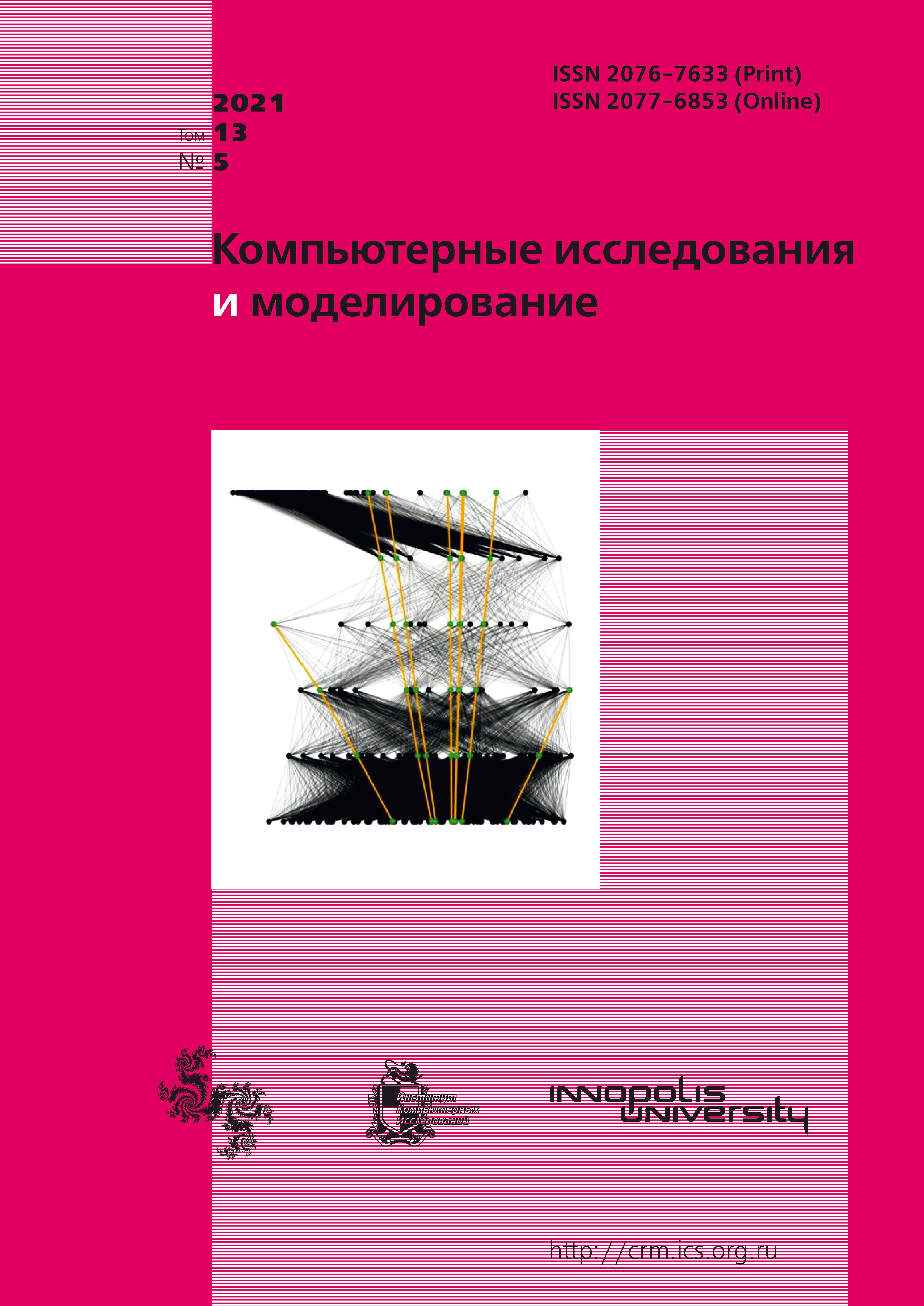All issues
- 2024 Vol. 16
- Issue 1 (special issue)
- 2023 Vol. 15
- 2022 Vol. 14
- 2021 Vol. 13
- 2020 Vol. 12
- 2019 Vol. 11
- 2018 Vol. 10
- 2017 Vol. 9
- 2016 Vol. 8
- 2015 Vol. 7
- 2014 Vol. 6
- 2013 Vol. 5
- 2012 Vol. 4
- 2011 Vol. 3
- 2010 Vol. 2
- 2009 Vol. 1
On the issue of numerical modeling of internal ballistics for a tubular charge in a spatial setting
 pdf (1314K)
pdf (1314K)
There are conditions of uneven combustion for tubular powder elements of large elongation used in artillery propelling charges. Here it is necessary to consider in parallel the processes of combustion and movement of powder gases inside and outside the channels of the powder tubes. Without this, it is impossible to adequately formulate and solve the problems of ignition, erosive combustion and stress-strain state of tubular powder elements in the shot process. The paper presents a physical and mathematical formulation of the main problem of the internal ballistics of an artillery shot for a charge consisting of a set of powder tubes. Combustion and movement of a bundle of powder tubes along the barrel channel is modeled by an equivalent tubular charge of all-round combustion. The end and cross-sectional areas of the channel of such a charge (equivalent tube) are equal to the sum of the areas of the ends and cross-sections of the channels of the powder tubes, respectively. The combustion surface of the channel is equal to the sum of the inner surfaces of the tubes in the bundle. The outer combustion surface of the equivalent tube is equal to the sum of the outer surfaces of the tubes in the bundle. It is assumed that the equivalent tube moves along the axis of the bore. The speed of motion of an equivalent tubular charge and its current position are determined from Newton’s second law. To calculate the flow parameters, we used two-dimensional axisymmetric equations of gas dynamics, for the solution of which an axisymmetric orthogonalized difference mesh is constructed, which adapts to the flow conditions. When the tube moves and burns, the difference grid is rearranged taking into account the changing regions of integration. The control volume method is used for the numerical solution of the system of gas-dynamic equations. The gas parameters at the boundaries of the control volumes are determined using a self-similar solution to the Godunov problem of decay for an arbitrary discontinuity. The developed technique was used to calculate the internal ballistics parameters of an artillery shot. This approach is considered for the first time and allows a new approach to the design of tubular artillery charges, since it allows obtaining the necessary information in the form of fields of velocity and pressure of powder gases for calculating the process of gradual ignition, unsteady erosive combustion, stress-strain state and strength of powder elements during the shot. The time dependences of the parameters of the internal ballistics process and the distribution of the main parameters of the flow of combustion products at different times are presented.
Indexed in Scopus
Full-text version of the journal is also available on the web site of the scientific electronic library eLIBRARY.RU
The journal is included in the Russian Science Citation Index
The journal is included in the RSCI
International Interdisciplinary Conference "Mathematics. Computing. Education"






